Sonos Beam (Gen 2) review
Sonos has upgraded its original compact soundbar offering, and we tested it to see whether the Sonos Beam (Gen 2) could live up to our lofty expectations

The 2nd Gen Sonos Beam is an upgrade in multiple areas and offers everything you'd want from a compact soundbar. It still lacks output choices, but the Sonos app and Trueplay make customizing the outstanding audio simple and fun.
-
+
Dolby Atmos with Trueplay tuning
-
+
Alexa and Google Assistant voice control
-
+
Easy to set up and use with Sonos app
-
-
Trueplay only available for iOS users
Livingetc knows design.
The original Sonos Beam was a big hit due to its compact size and relative affordability (when compared to the likes of its sibling soundbar, the Arc), but there were always a few things missing. A lack of Bluetooth and Dolby Atmos meant that it could never truly live up to some of the more high-end offerings flooding the market, but Sonos hopes to change this with its second-generation model.
We tried out the Sonos Beam (Gen 2) to test whether it could really offer everything it promises, especially with our small space and modest TV set-up. In short, we were very impressed, and you can read more of our thoughts below.
In the meantime, jump over to our ranking of the best soundbars to see how the Beam measured up against other top offerings.
Sonos Beam (Gen 2): Key specs
- Bluetooth enabled: Yes
- Works with: Alexa, Google Assistant
- Colors: Black, white
- HDMI ARC: Yes
- Remote control: No
- Cables: HDMI, power
- Dimensions: H2.7 x W25.6 x D3.9in
- Weight: 6.35lbs
Sonos Beam (Gen 2): Set-up
The lack of possible connections on the Sonos Beam does have the benefit of making the initial set-up process incredibly simple. Included in the box are the soundbar, power cable, HDMI 2.0 cable, and optical audio adapter. The latter makes it possible to use an optical cable to connect the bar to your TV, but HDMI ARC is probably the way most people will want to go.
Once you have connected the Beam to the power and hooked it up to your TV, it's ready to go. However, while it's perfectly possible to use the soundbar without connecting it to the WiFi, using it in conjunction with the Sonos app opens up a lot more possibilities. For example, connecting the speaker means you can customize bass, treble, and more with EQ presets and - if you have an iOS device - configure and use Trueplay.
Unfortunately only accessible to Apple users, setting up Trueplay is a lot of fun for those able to use it. The process of tuning the sound to the particulars of your room, Trueplay involves walking around the space while waving your phone in the air. It feels a little silly, but it's also something that a soundbar from another brand doesn't offer.
We'll say that we didn't notice a huge difference in the sound afterwards, but that could have more to do with our ears (and the particulars of our space) than anything else.
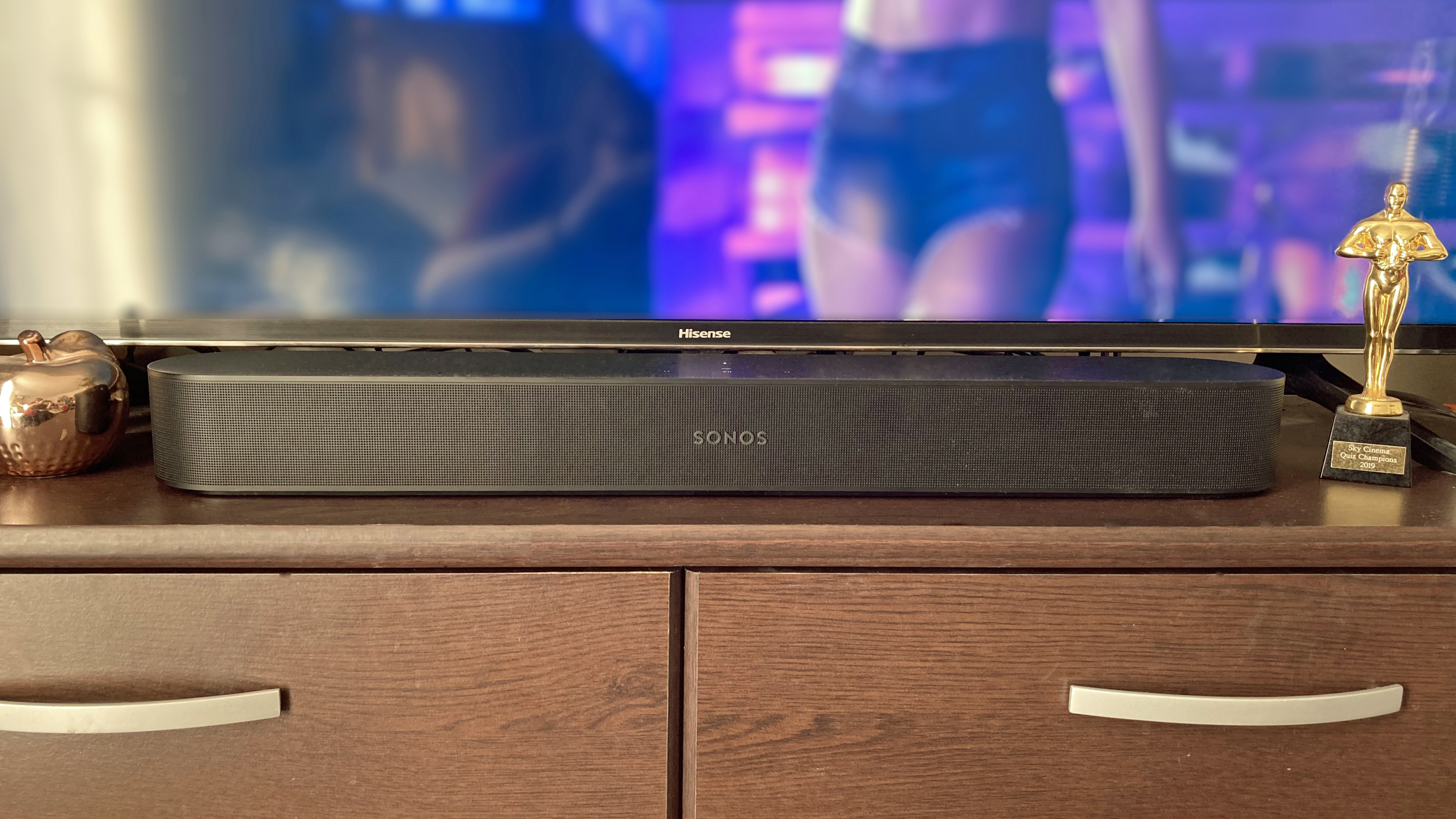
Sonos Beam (Gen 2): Performance
Once you have all of the settings where you want them, the audio that comes from the Sonos Beam is pretty spectacular. With five Class-D digital amplifiers, a center tweeter, four elliptical mid-woofers, and three passive radiators, the sound easily overcomes the speaker's compact size. It lacks dedicated upward-firing drivers, but HRTF (head-related transfer function) gives the illusion of height.
All of this in-built tech means that the Beam can serve as an adequate sound system by itself, but a selling point of Sonos speakers is how easy the brand makes it to build out a wider system, including surround units and the best subwoofer.
Our set-up was restricted to the Beam alone, which we connected via HDMI to our Hisense Roku TV. We were able to configure Trueplay to get the most out of the Dolby Atmos, and it was a tremendous improvement on the TV's in-built speakers. Music, especially, sounds amazing with the Beam, and on-screen action is given a boost without losing dialogue clarity.
Our only issue was a periodic disconnect with controlling the soundbar with our TV remote control - meaning we had to manually change the volume using the touch controls on top. This, of course, could be an issue with our TV, and not the soundbar.
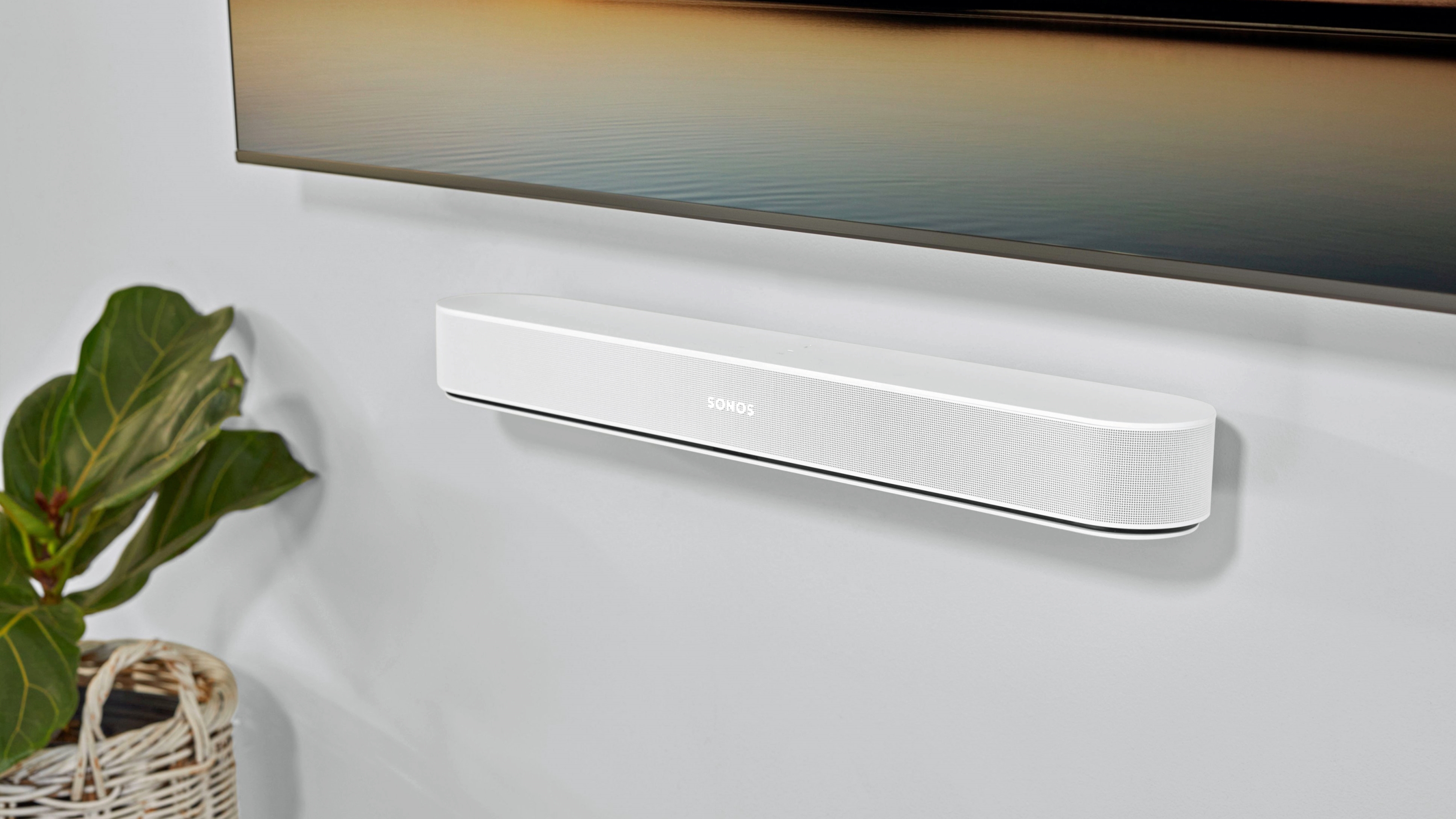
Sonos Beam (Gen 2): Design
The second-generation Sonos Beam looks almost identical to the first-gen model, but there are a couple of differences (outside of the presence of Dolby Atmos). The previously fabric grille has been replaced with a plastic one, which still looks stylish.
We opted to place it in front of the television rather than mounting it. However, mounting it might be the best option, as the relative shortness of the soundbar when placed in front of any TV larger than 40-inches means that any stray cables and sockets are very much on display.
You can mount the Beam with the Sonos Beam Wall Mount kit, but this isn't included. For more on how to get started, you can read our guide on how to mount a soundbar.
The matte finish on top also looks lovely from a distance, but we noticed that it was extremely prone to picking up fingerprint marks whenever you need to use the physical controls. These can easily be wiped off, of course, but it does mess with the luxury aesthetic somewhat.
We'll note that the Gen 2 Beam is exactly the same size and weight as its predecessor, so other than the new grille there's been no significant fiddling with the soundbar's build.
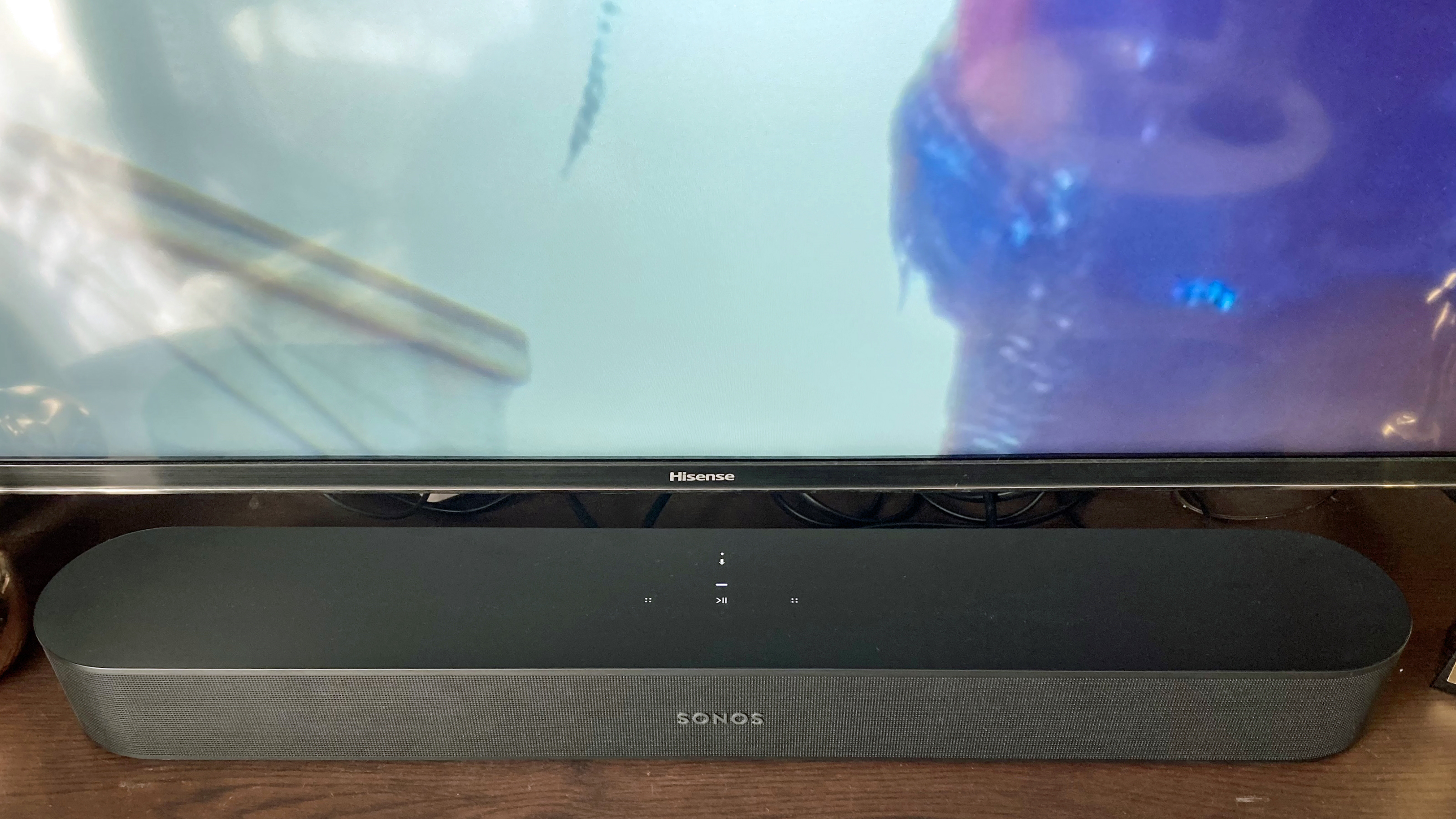
Sonos Beam (Gen 2): Our verdict
Though we never got to have hands-on experience with the original Sonos Beam, the presence of two extra channels, Dolby Atmos and a cautiously improved design mean that this soundbar is certainly worthy of the upgrade label.
But if audio is what's important to you, you certainly won't be disappointed with this new and improved Beam. It's a little more expensive than the previous iteration, but those who never invested in the original model will be getting a seriously upgraded experience for their extra cash.
About this review
All of our reviews are conducted in genuine home environments to ensure that any recommendations that we make are as relevant as possible for our readers. Caroline is the smart homes editor for Livingetc, with her small studio space filled with everything from soundbars to dehumidifiers for testing. The Sonos Beam was tested alongside the Hisense Roku TV with Trueplay tuning done with an iPhone SE.
Be The First To Know
The Livingetc newsletters are your inside source for what’s shaping interiors now - and what’s next. Discover trend forecasts, smart style ideas, and curated shopping inspiration that brings design to life. Subscribe today and stay ahead of the curve.
Caroline was formerly smart home ecommerce editor for Livingetc, covering everything tech for the home, from smart speakers to air purifiers and everything in between. She is passionate about technology and smart devices and their role in daily life, enhancing the home without sacrificing personal style and carefully chosen interiors. In her spare time, she can be found tinkering with bulbs, soundbars, and video doorbells in an effort to automate every part of her small home. Previously, she lent her expertise to the likes of Expert Reviews, IT Pro, Coach, The Week, and more.
-
 Fashion Week in Disguise? Milan Design Week 2025 Proves the Future Is Furniture
Fashion Week in Disguise? Milan Design Week 2025 Proves the Future Is FurnitureCall it a furniture fair or call it fashion’s next frontier — these are the sartorially charged events worth attending this season
By Julia Demer Published
-
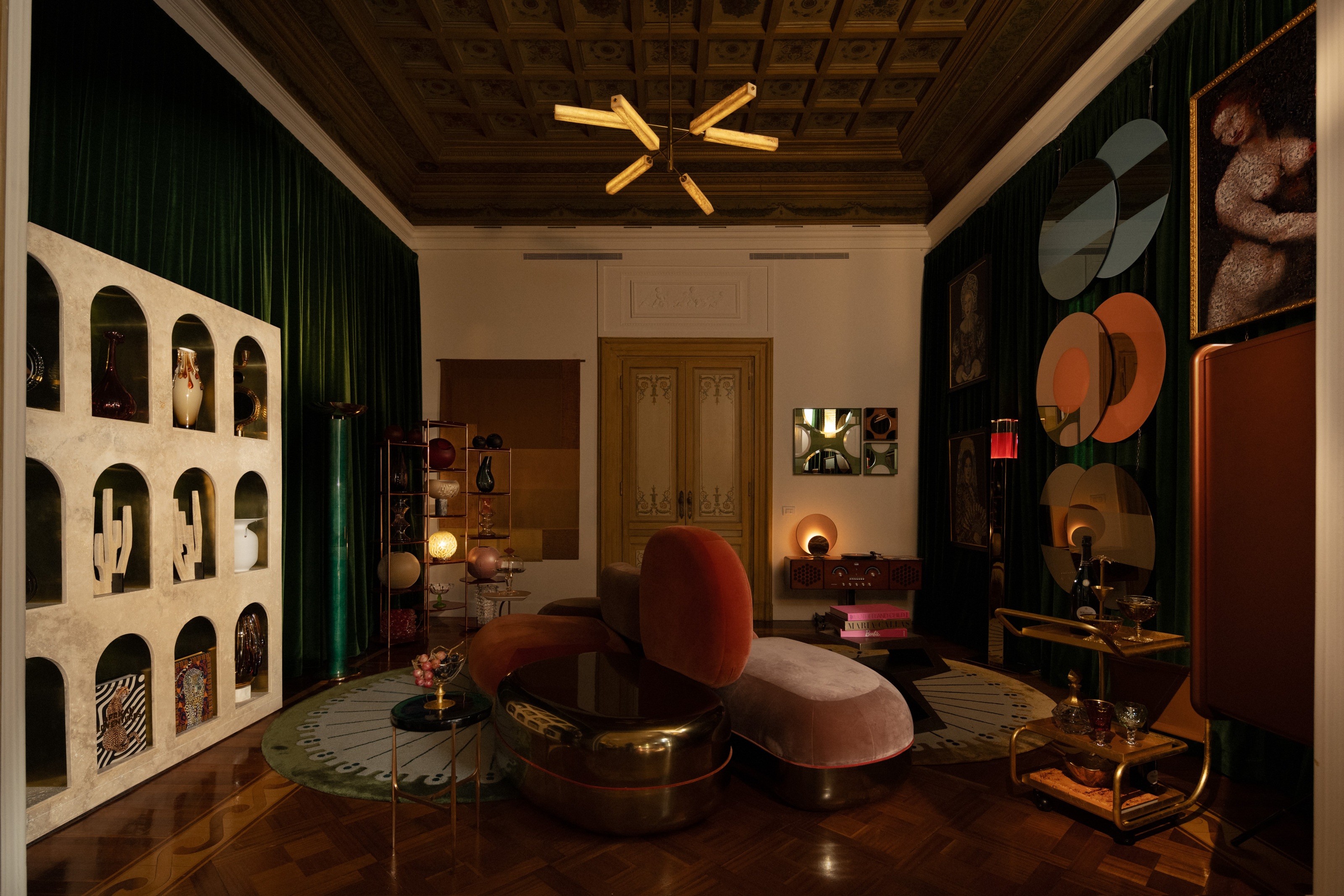 7 Ideas to Steal From Milan Design Week's 'Apartments' — Rooms Decorated by the World's Best, and Most Creative, Designers
7 Ideas to Steal From Milan Design Week's 'Apartments' — Rooms Decorated by the World's Best, and Most Creative, DesignersAt Milan Design Week, some of the most exciting showcases of design are delivered in beautifully decorated apartments, conceived to push the boundaries of design today
By Hugh Metcalf Published
-
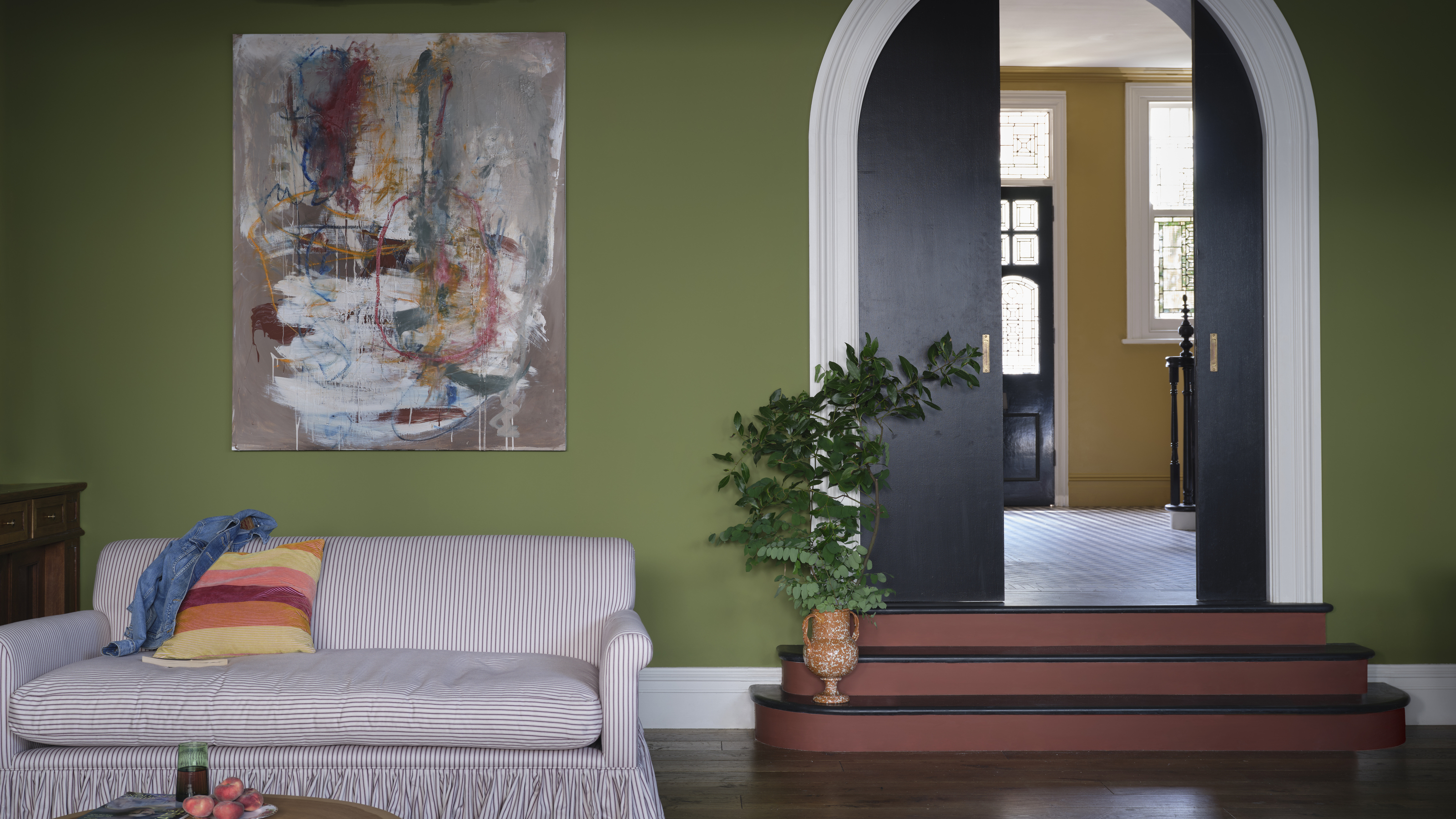 Farrow & Ball Just Brought Back 3 "Archive" Colors — Here's Why They're Important in Design Right Now
Farrow & Ball Just Brought Back 3 "Archive" Colors — Here's Why They're Important in Design Right NowThe British paint brand has reintroduced some cult classics, and they feel more relevant than ever
By Lilith Hudson Published